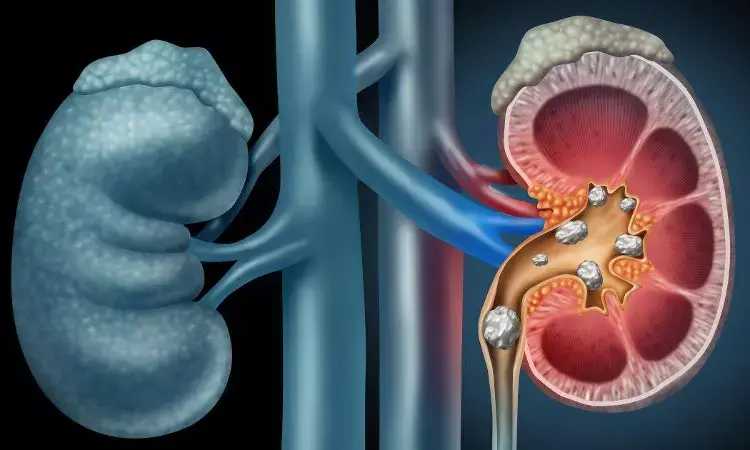- Home
- Medical news & Guidelines
- Anesthesiology
- Cardiology and CTVS
- Critical Care
- Dentistry
- Dermatology
- Diabetes and Endocrinology
- ENT
- Gastroenterology
- Medicine
- Nephrology
- Neurology
- Obstretics-Gynaecology
- Oncology
- Ophthalmology
- Orthopaedics
- Pediatrics-Neonatology
- Psychiatry
- Pulmonology
- Radiology
- Surgery
- Urology
- Laboratory Medicine
- Diet
- Nursing
- Paramedical
- Physiotherapy
- Health news
- Fact Check
- Bone Health Fact Check
- Brain Health Fact Check
- Cancer Related Fact Check
- Child Care Fact Check
- Dental and oral health fact check
- Diabetes and metabolic health fact check
- Diet and Nutrition Fact Check
- Eye and ENT Care Fact Check
- Fitness fact check
- Gut health fact check
- Heart health fact check
- Kidney health fact check
- Medical education fact check
- Men's health fact check
- Respiratory fact check
- Skin and hair care fact check
- Vaccine and Immunization fact check
- Women's health fact check
- AYUSH
- State News
- Andaman and Nicobar Islands
- Andhra Pradesh
- Arunachal Pradesh
- Assam
- Bihar
- Chandigarh
- Chattisgarh
- Dadra and Nagar Haveli
- Daman and Diu
- Delhi
- Goa
- Gujarat
- Haryana
- Himachal Pradesh
- Jammu & Kashmir
- Jharkhand
- Karnataka
- Kerala
- Ladakh
- Lakshadweep
- Madhya Pradesh
- Maharashtra
- Manipur
- Meghalaya
- Mizoram
- Nagaland
- Odisha
- Puducherry
- Punjab
- Rajasthan
- Sikkim
- Tamil Nadu
- Telangana
- Tripura
- Uttar Pradesh
- Uttrakhand
- West Bengal
- Medical Education
- Industry
Vacuum suction ureteroscopic laser lithotripsy effective modality for impacted upper ureteral stones

Vacuum suction ureteroscopic laser lithotripsy is an effective modality for impacted upper ureteral stones according to a recent study published in the World Journal of Urology.
A study was conducted to compare a novel vacuum suction ureteroscopic laser lithotripsy (VS-URS) with traditional ureteroscopic laser lithotripsy (T-URS) for impacted upper ureteral stones and to better define the potential benefits of Vacuum suction ureteroscopic laser lithotripsy.
Between May 2019 and March 2021, 158 patients with impacted upper ureteral stones underwent ureteroscopic holmium-YAG laser lithotripsy. Of these, 76 underwent Vacuum suction ureteroscopic laser lithotripsy and 82 underwent traditional ureteroscopic laser lithotripsy. In vacuum suction ureteroscopic laser lithotripsy procedures, the vacuum suction device is composed of a 5F ureteral catheter and a tee joint. The ureteral catheter is linked to the vacuum aspirator by the sidearm of the tee joint, and a 200 μm fibre is inserted through the tee joint and the ureteral catheter into the stone site for lithotripsy.
Results of the study are:
- When compared to the T-URS group, the Vacuum suction ureteroscopic laser lithotripsy group had a shorter mean operation time, lower fever rate, less stone retropulsion, lower extra management rate, and a higher stone-free rate on the first postoperative day.
- There were no significant differences in stone-free rates 1 month after surgery between groups
Thus, Vacuum suction ureteroscopic laser lithotripsy is an effective modality for impacted upper ureteral stones and has a shorter operating time, lower fever rate, less stone retropulsion, and a higher primary stone-free rate compared with traditional ureteroscopic laser lithotripsy.
Reference:
Wu, ZH., Wang, YZ., Liu, TZ. et al. Comparison of vacuum suction ureteroscopic laser lithotripsy and traditional ureteroscopic laser lithotripsy for impacted upper ureteral stones. World J Urol (2022). https://doi.org/10.1007/s00345-022-04075-3
Dr. Shravani Dali has completed her BDS from Pravara institute of medical sciences, loni. Following which she extensively worked in the healthcare sector for 2+ years. She has been actively involved in writing blogs in field of health and wellness. Currently she is pursuing her Masters of public health-health administration from Tata institute of social sciences. She can be contacted at editorial@medicaldialogues.in.
Dr Kamal Kant Kohli-MBBS, DTCD- a chest specialist with more than 30 years of practice and a flair for writing clinical articles, Dr Kamal Kant Kohli joined Medical Dialogues as a Chief Editor of Medical News. Besides writing articles, as an editor, he proofreads and verifies all the medical content published on Medical Dialogues including those coming from journals, studies,medical conferences,guidelines etc. Email: drkohli@medicaldialogues.in. Contact no. 011-43720751


